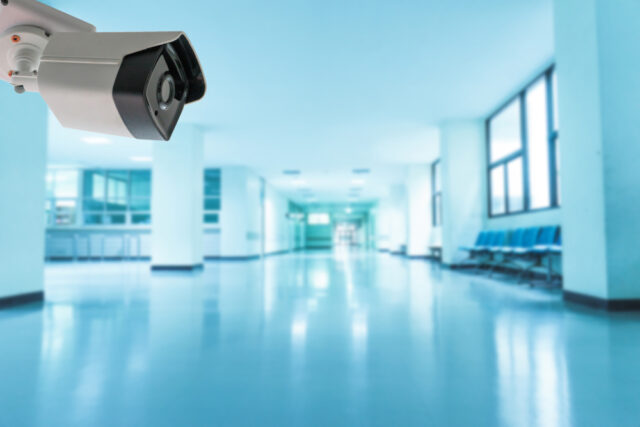
How are video cameras and speaker systems used in hospitals?
How are video cameras and speaker systems used in hospitals?
Modern technologies have a significant impact on the work of medical institutions. In particular, video surveillance in hospitals and public address systems provide control and timely communication between staff, patients, and hospital visitors. At the same time, production means of communication and monitoring must comply with Russian and international requirements. Read our article about how video cameras, video, and audio intercoms are used in hospitals.
Why are video cameras and speaker systems needed in hospitals?
Installation of video monitoring equipment on the territory of medical institutions of the Russian Federation, as public places of mass stay of people, is mandatory based on Government Decree No. 272 dated September 25, 2015. The goal is to ensure the anti-terrorist security of the population.
At the same time, in hospitals, it is necessary to organize continuous video surveillance with a mandatory archive storage period of 30 days.
Details are in the article “Video surveillance in hospitals and clinics. Organization rules.”
In addition to providing security, hospital video cameras and communication systems are designed to:
- ensure communication (between staff, doctors, patients). At a basic level, you need the ability to make general and emergency announcements throughout the facility. As part of the internal warning system, patients are also monitored in intensive care units (according to the principle of a baby monitor). Timely monitoring of the ward’s situation can sometimes save a person’s life. At the same time, relatives of seriously ill patients have a remote opportunity to familiarize themselves with the situation in the ward at any time;
- collect marketing and professional data. Here you can talk about counting visitors, recording information about the conduct of therapy, writing scientific papers, creating electronic databases (including electronic case histories).
Benefits of modern technology
Technologies of the 21st century make it possible to carry out:
- Round-the-clock monitoring of the situation to increase general situational awareness.
- Fast internal communications of staff, visitors, and patients.
- Preventive security measures aimed at preventing offenses.
- Actions aimed at reducing false claims and controversial situations facilitated by detailed video materials with sound.
- Cloud storage of large amounts of information without additional financial costs and the involvement of human resources. Read the article “Video Surveillance Data Storage in Artificial Intelligence Era.”
- Remote control and access to video materials.
Risks
There are two main risks:
- Stability of equipment to work in an intensive (continuous) mode in conditions of mass presence of people.
- Privacy issues:
- within the framework of the law on Personal data. We are talking about notifying visitors/patients about video surveillance and obtaining written consent to the processing of personal data;
- the need for personnel consent to video monitoring following the Work Code of the Russian Federation;
- the possibility of video surveillance and video recording of the medical and diagnostic process based on Federal Law No. 152 (Article 10, Part 2, Item 4);
- the patient’s right to video filming by a doctor solely for personal use.
Equipment Compliance with Government Standards
The safety of electrical equipment (including video cameras and communication systems) used on the territory of medical institutions of the Russian Federation is regulated by the international technical standard IEC 60601-1.
The analogs are the European standard EN 60601-1, used in countries such as Australia, Japan, Brazil, the USA, and the Canadian CSA 60601-1.
These state standards apply to all medical electrical equipment and regulate issues:
- security;
- equipment performance;
- environmentally friendly design;
- electromagnetic compatibility.
Integration options
Safe communication solutions for medical institutions imply easy integration with video surveillance systems, digital signage, access control systems, telephony, building management, and security.
The goal is to ensure the delivery of messages (general, urgent) from different hospital places to provide audio and situational video control.
Instead of conclusion
The indispensable helpers of any medical institution are the public address system and the video camera. The hospital is obliged to provide continuous video surveillance and timely transmission of emergency messages inside the premises and the surrounding area. In addition, it is necessary to take into account the realities of the modern world: the need to collect marketing and professional information through intelligent video analytics.














